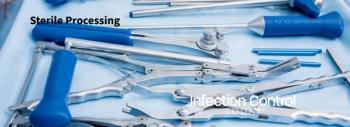
Best Practices for Flexible Endoscopes Storage
What are the recommendations for storing endoscopes clean, safe, and intact?
An endoscope is a medical device with a light attached to look inside a body cavity or organ. Endoscopes have a high risk for contamination and can pose a risk of disease transmission to patients. Proper reprocessing and storage guidelines are imperative to reduce the risk of contamination of endoscopes. Improper storage of endoscopes will result in needing to reprocess the medical device due to recontamination. Reprocessing is often valued above safe storage, but storage of scopes is also a critical component in ensuring scope care and maintenance.
While not in use, endoscopes should be stored in a closed, clean cabinet.Endoscope cabinets can also be used for drying. Storage cabinets should be made of a material that can be disinfected. Store all endoscopes in a vertical position; this position is used to ensure complete drying. Review each endoscope's instructions for use (IFU) and recommendations from AORN (Association for periOperative Registered Nurses) and The Joint Commission for the optimal storage recommendations. Some cabinet designs include provisions for horizontal storage, though most endoscope manufacturers will recommend vertical storage. While in storage cabinets, scopes should hang freely and avoid touching one another to prevent damage. The scope should also avoid touching the walls of the cabinet.
Removable parts can be stored with endoscopes to prevent the loss of these components and for tracking purposes, but do not attach them to the endoscope during storage. Attaching removable parts during storage can trap liquid inside the scope. Organizations such as the Society of Gastroenterology Nurses and Associates, Inc (SGNA) and AAMI (Association for the Advancement of Medical Instrumentation) do not recommend attaching removal parts during storage.
While in storage cabinets, each scope should be identified by a tag or other means. On the tag should be the scope’s hang time or shelf life. The hang time is the time scopes can be stored before needing to be reprocessed.
Endoscope cabinets should be cleaned routinely. Facilities should maintain a record of their cleaning schedule and know when maintenance of cabinets is approaching. Facilities should have reminders near cabinets and pick easy-to-remember dates for cleaning, such as every Monday. It is recommended to follow each cabinet's IFU for determining compatible products for cleaning and disinfecting. Also, follow the product's label (s) and adhere to the manufacturer's recommended contact time. Remember to clean drip trays and scope holders in the cabinet. Abrasive cleaners and pads are not recommended for cleaning cabinets. It is beneficial to use lint-free cloths. Cabinet filters should be replaced as instructed, and there should be proper documentation of filter change. If a cabinet becomes damaged at any point in time, fix or replace the cabinet before continuing to store scopes.
Proper storage is critical to protect endoscopes from contamination and damage and to promote proper drying. Ensure that cabinets accommodate each scope’s size before storage. Some scopes may be too long for specific cabinets. Cabinets play a significant role in preventing the proliferating of organisms when properly used and regularly maintained. Cabinets should be used for storage rather than transport bins.
Newsletter
Stay prepared and protected with Infection Control Today's newsletter, delivering essential updates, best practices, and expert insights for infection preventionists.






